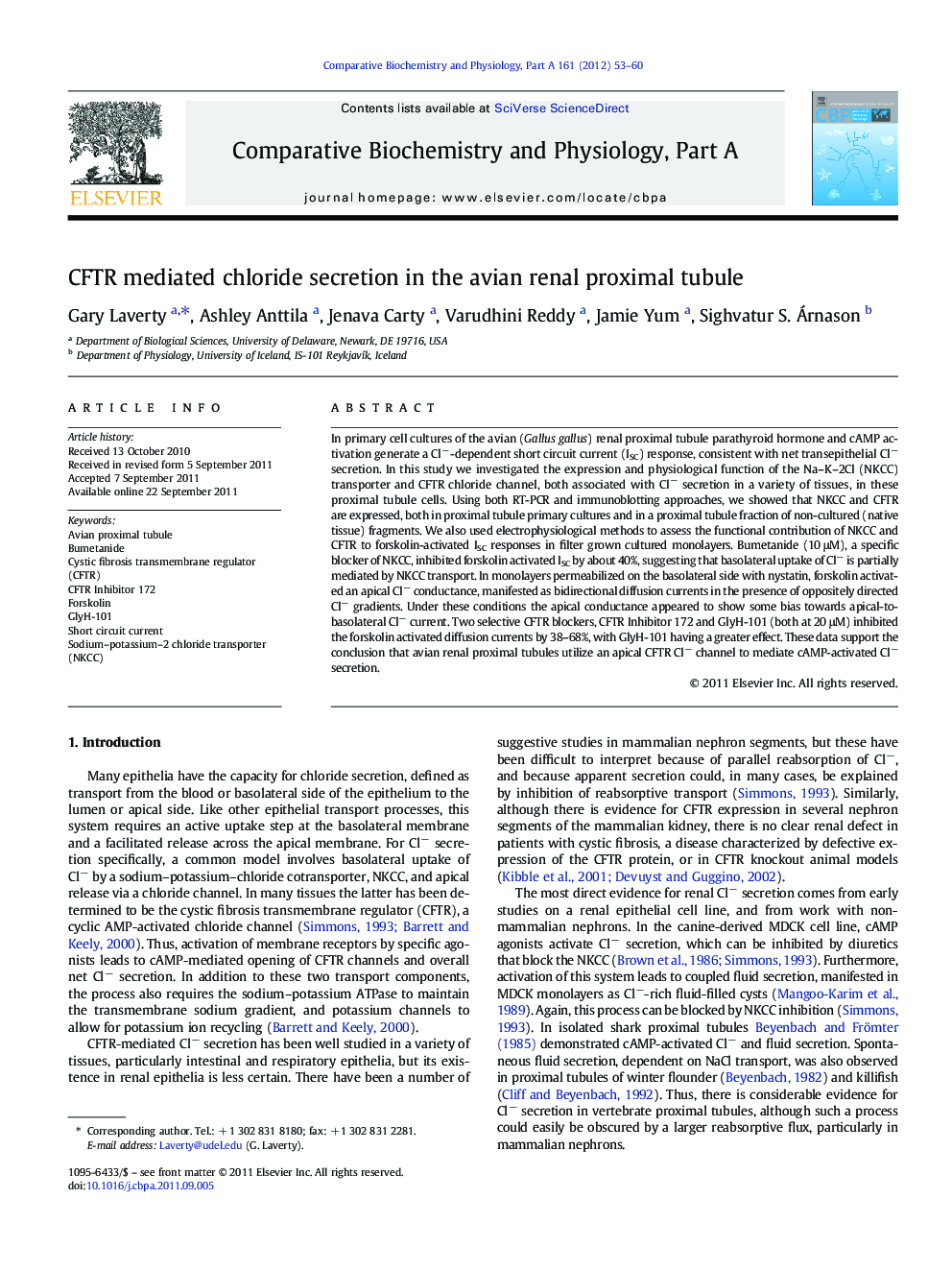| Article ID | Journal | Published Year | Pages | File Type |
|---|---|---|---|---|
| 1972850 | Comparative Biochemistry and Physiology Part A: Molecular & Integrative Physiology | 2012 | 8 Pages |
Abstract
In primary cell cultures of the avian (Gallus gallus) renal proximal tubule parathyroid hormone and cAMP activation generate a Clâ-dependent short circuit current (ISC) response, consistent with net transepithelial Clâ secretion. In this study we investigated the expression and physiological function of the Na-K-2Cl (NKCC) transporter and CFTR chloride channel, both associated with Clâ secretion in a variety of tissues, in these proximal tubule cells. Using both RT-PCR and immunoblotting approaches, we showed that NKCC and CFTR are expressed, both in proximal tubule primary cultures and in a proximal tubule fraction of non-cultured (native tissue) fragments. We also used electrophysiological methods to assess the functional contribution of NKCC and CFTR to forskolin-activated ISC responses in filter grown cultured monolayers. Bumetanide (10 μM), a specific blocker of NKCC, inhibited forskolin activated ISC by about 40%, suggesting that basolateral uptake of Clâ is partially mediated by NKCC transport. In monolayers permeabilized on the basolateral side with nystatin, forskolin activated an apical Clâ conductance, manifested as bidirectional diffusion currents in the presence of oppositely directed Clâ gradients. Under these conditions the apical conductance appeared to show some bias towards apical-to-basolateral Clâ current. Two selective CFTR blockers, CFTR Inhibitor 172 and GlyH-101 (both at 20 μM) inhibited the forskolin activated diffusion currents by 38-68%, with GlyH-101 having a greater effect. These data support the conclusion that avian renal proximal tubules utilize an apical CFTR Clâ channel to mediate cAMP-activated Clâ secretion.
Related Topics
Life Sciences
Biochemistry, Genetics and Molecular Biology
Biochemistry
Authors
Gary Laverty, Ashley Anttila, Jenava Carty, Varudhini Reddy, Jamie Yum, Sighvatur S. Árnason,
